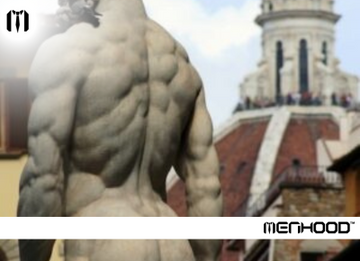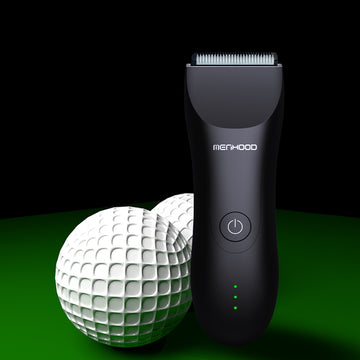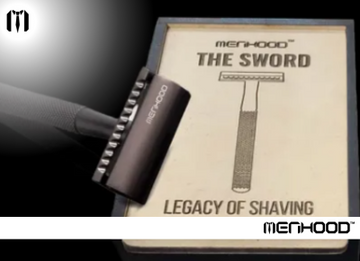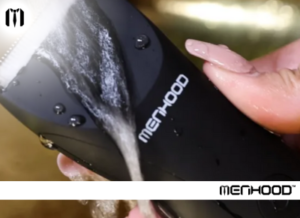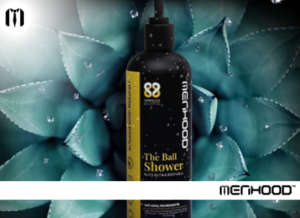Let's face it: Body hair is a natural part of being human and grows in unexpected places. One area that often gets less attention but can be a concern for many is butt hair. You're not alone whether you want to remove it for personal comfort, aesthetics, or hygiene reasons.
Fortunately, a few options exist to safely and effectively remove butt hair. From waxing to shaving, laser treatments, and more, the options are diverse, and the results can be impressive.
This article provides tips and answers commonly asked questions about butt hair removal.
The Importance of Butt Hair Removal
While butt hair isn't discussed often, it can cause issues if left unchecked. Here are some of the main reasons why you may choose to remove your butt hair:

1. Hygiene and Comfort:
One of the primary reasons for removing butt hair is hygiene. Butt hair can trap moisture, sweat, and bacteria, leading to unpleasant odors and discomfort. Excessive hair in the buttock area can also contribute to skin irritation and chafing, making it uncomfortable to sit or move around. Keeping this area hair-free, you can maintain better hygiene and enjoy increased comfort throughout the day.
2. Reducing the Risk of Infections:
Butt hair can create a breeding ground for bacteria, particularly if you sweat a lot or don't maintain good personal hygiene. This can heighten the risk of skin infections, folliculitis (an inflammatory condition affecting hair follicles), and even more serious issues like abscesses. Regular butt hair removal can help reduce the likelihood of these uncomfortable and potentially painful issues.
3. Enhancing Intimacy and Confidence:
Butt hair removal can boost confidence in intimate situations. Many people find that a smooth, hair-free buttock area can make them feel more attractive and self-assured during intimate moments. It's a personal preference, of course, but maintaining this grooming routine can contribute to feeling more comfortable and confident in your skin.
4. Preventing Ingrown Hairs:
Butt hair can be prone to ingrown hairs, especially curly or coarse. Ingrown hairs can be painful and unsightly, leading to redness and irritation. Regular removal of butt hair can reduce the chances of ingrown hairs developing, leaving your skin smoother and blemish-free.
5. Clothing Comfort:
Tight-fitting clothing can be particularly uncomfortable when you have excess butt hair. The friction between the fabric and hair can lead to irritation and even hair breakage. Removing butt hair can make wearing such clothing more comfortable and enjoyable.
6. Aesthetics and Personal Preference:
While the practical reasons for butt hair removal are significant, personal aesthetics and preference play a role too. Some people simply prefer the look and feel of a hair-free buttock area. It's a matter of individual choice and comfort, and there's no one-size-fits-all answer.
Popular Methods for Butt Hair Removal
Several methods for removing butt hair include waxing, shaving, laser treatments, and more. Each approach has its advantages and limitations to consider before making a decision. Let's take a closer look at the most popular options:
1. Shaving
Shaving is the simplest and quickest way to remove butt hair. You only need a razor and shaving cream or gel to do the job. However, it requires regular upkeep and comes with the risk of cuts and irritation. To maximize safety and comfort when shaving your butt hair, use a Menhood™ Razor – The Sword for its unique curvy design, which follows the shape of your body for an effortless shave.

2. Waxing
Waxing is an effective way to remove butt hair; the output can last up to six weeks. It's a bit more involved than shaving, as you'll need warm wax and strips, but it's relatively straightforward once you get the hang of it. Waxing can be painful, however, so prepare accordingly if this is your preferred method for butt hair removal.
3. Laser Hair Removal
In recent years, the popularity of laser hair removal has been on the rise, and it has also proven to be an effective option for the buttock area. This method targets the hair follicles with a laser beam to damage and disable them, leading to permanent hair reduction. It's more expensive than other methods, but you'll get longer-lasting results.
4. Depilatory Creams
Depilatory creams use a special chemical mix to dissolve the hair so you can wipe it away with a cloth. This is a great way to quickly and painlessly remove butt hair, although you may need more frequent treatments than other methods. Depilatory creams are also safe for sensitive skin but can irritate if left on the skin for too long.
5. Sugaring
Sugaring is a hair removal method utilizing homemade sugar, lemon juice, and water paste. This method can be used to remove butt hair safely and without pain. The paste sticks to the hair only, so it won't pull on the skin like waxing does. It's also gentle enough for use on sensitive areas like the buttocks.
Safety Measures to Avoid Irritation while Butt Hair Removal
Butt hair removal is a topic many people are curious about but often hesitate to discuss openly. Whether you're looking to maintain personal hygiene, reduce irritation, or simply prefer a smoother feel, it's essential to approach this topic with care and consideration. Here are some crucial safety measures to avoid irritation while removing butt hair.
Safety Measures to Avoid Irritation While Butt Hair Removal:
Proper Hygiene Beforehand:
Before you begin any hair removal process, it's crucial to ensure that your buttock area is clean and free from sweat, dirt, or bacteria. Thoroughly shower and gently cleanse the area with a mild, pH-balanced soap. The first step establishes the basis for a cleaner and irritation-free experience.
Choose the Right Method:
Butt hair removal can be achieved through various methods, including shaving, waxing, depilatory creams, or professional laser treatments. Each method has pros and cons; the choice largely depends on your preference and skin sensitivity. Shaving is quick but may require frequent maintenance, while waxing provides longer-lasting results but can be more painful. Always consider your skin type and tolerance when selecting a method.
Trim Before You Shave:
If you decide to go with shaving, it's advisable to trim the butt hair first. Use sharp, clean scissors to trim the hair to a manageable length. This makes shaving more comfortable and reduces the risk of clogging your razor. The Menhood™ Grooming Trimmer 2.0 is an excellent tool for precision trimming and styling of butt hair, thanks to its advanced blade technology and easy-to-use design.

Use a Quality Razor and Shaving Cream:
Invest in a high-quality razor with a sharp blade when shaving your buttocks. Dull razors can lead to more friction and irritation. Use ample shaving cream or gel to establish a protective barrier between the razor and your skin. Opt for a product suitable for sensitive skin to minimize the risk of irritation.
Shave in the Right Direction:
Shave following the direction of hair growth to reduce the ingrown hairs and irritation. This means shaving from the top of the buttocks downwards for most people. Refrain from exerting excessive pressure, as it can lead to razor burn. Rinse the razor frequently to remove hair buildup.
Avoid Overuse of Depilatory Creams:
If you prefer depilatory creams, be cautious not to overuse them. These products contain chemicals that irritate sensitive skin, especially in the buttock area. Follow the product instructions carefully, and perform a patch test on a small area before applying it to a larger surface.
Professional Help:
If you're concerned about potential risks or have sensitive skin, consider seeking professional help for butt hair removal. Licensed estheticians or dermatologists can provide expert guidance and perform treatments such as laser hair removal, which offers long-lasting results with minimal irritation.
Post-Removal Care and Maintenance
After successfully removing unwanted butt hair, paying attention to post-removal care and maintenance is crucial. Neglecting this aspect can lead to discomfort, irritation, and potential complications. Here are some key tips to keep in mind:
A. Hygiene Is Key
Proper hygiene is paramount after any hair removal procedure; the butt area is no exception. Here are some hygiene tips to keep in mind:
- Regular Cleansing: Clean the area with a mild, fragrance-free soap and warm water to prevent bacterial infections. Avoid harsh or scented products, as they irritate freshly exposed skin.
- Pat, Don't Rub: After washing, pat the area dry with a clean, soft towel rather than rubbing it vigorously. This helps to minimize friction and lower the potential for irritation.
- Change Underwear Regularly: Wearing clean underwear made from breathable materials like cotton can help prevent sweat and bacteria buildup. Change your underwear daily, especially after engaging in physical activities.
B. Moisturize for Smoothness
Moisturizing is important to keep your skin soft and supple after butt hair removal. Here's how to do it right:
- Choose the Right Moisturizer: Opt for a fragrance-free, hypoallergenic moisturizer suitable for sensitive skin. Aloe vera gel or a moisturizer containing chamomile can be soothing.
- Apply After Every Shower: Apply the moisturizer immediately after your daily shower when your skin is still slightly damp. This assists in sealing in moisture, preventing your skin from becoming dry.
- Avoid Fragrances and Harsh Chemicals: Be cautious of moisturizers with fragrances or harsh chemicals, as they can irritate. Stick to products designed for sensitive skin to minimize the risk of adverse reactions.
C. Exfoliation for Preventing Ingrown Hairs
One common concern after hair removal is the development of ingrown hairs. These can be uncomfortable and unsightly, but exfoliation can help prevent them:
- Use a Gentle Exfoliant: Use a mild scrub or washcloth to exfoliate the treated area once or twice a week gently. Avoid harsh exfoliants that may irritate the skin.
- Exfoliate Before Hair Removal: If you remove butt hair again, exfoliate a day or two before the procedure. This can help prevent hairs from becoming trapped beneath the skin.
- Don't Pick or Squeeze: If you come across an ingrown hair, avoid the temptation to pick or squeeze it. This can lead to infection and scarring. Instead, gently exfoliate the area and apply an over-the-counter hydrocortisone cream if needed.
D. Stay Sun Safe
Exposing freshly treated skin to the sun can lead to pigmentation changes and irritation. Here's how to protect your skin:
- Apply Sunscreen: If you're going out in the sun after treating your skin, put sunscreen with an SPF of at least 30 on the treated area. Reapply as directed, especially if you're swimming or sweating.
- Cover Up: Wearing loose-fitting clothing can help protect your skin from direct sunlight. Choose clothes that are made from natural, breathable materials like cotton.
E. Keep an Eye on Irritation and Infection
Lastly, it's essential to be vigilant for any signs of irritation, infection, or adverse reactions. If you notice any of the following, consult a healthcare professional:
- Redness and Swelling: Mild redness and swelling are common after hair removal, but if they worsen or persist, it could be a sign of infection or an allergic reaction.
- Pus or Discharge: Any discharge or pus from the treated area is a clear sign of infection and should be addressed promptly.
- Severe Itching or Pain: While some itching and discomfort are normal, severe itching or pain may indicate an issue that requires medical attention.
Conclusion
Removing hair from the buttocks can help keep the area clean and hygienic. However, it's important to follow safety guidelines and take steps to prevent irritation or infection. Make sure to shave in the same direction your hair grows, and use a product that matches your skin type. Additionally, moisturizing and exfoliating regularly can help prevent ingrown hairs. Lastly, avoiding direct sun exposure and monitoring for signs of irritation will help keep your skin healthy and smooth. By following these easy tips, you can have a hair removal experience that is both safe and works well.
FAQs
Q.1 How to remove butt hair?
The best way to remove butt hair is by shaving toward hair growth, using a product such as a razor or depilatory cream suitable for your skin type. For more sensitive areas, it may be best to seek professional help from a licensed esthetician or dermatologist.
Q.2 Can I use the same products for butt hair removal as I use on the rest of my body?
Generally, you can use the same products for butt hair removal as you would for other body parts. However, if you have sensitive skin or are prone to irritation or infection, opting for a milder product specifically designed for sensitive areas is best.
Q.3 How to remove hair from the anus permanently?
The only permanent solution for butt hair removal is laser hair removal. A professional should perform this procedure in a clinical setting to ensure safety and avoid irritation or infection.
Q.4 Is there a way to reduce the risk of irritation?
Yes, moisturizing after showering and exfoliating once or twice weekly can help minimize the risk of irritation. Additionally, it is best to use a mild and hypoallergenic product suitable for sensitive skin.
Q.5 How often should I shave?
Shaving every 1-2 weeks is best, depending on your hair regrowth rate. Using a clean razor and avoiding overshaving is important, as this can cause irritation or infection. Additionally, be sure to follow up with a moisturizer after each shave.

